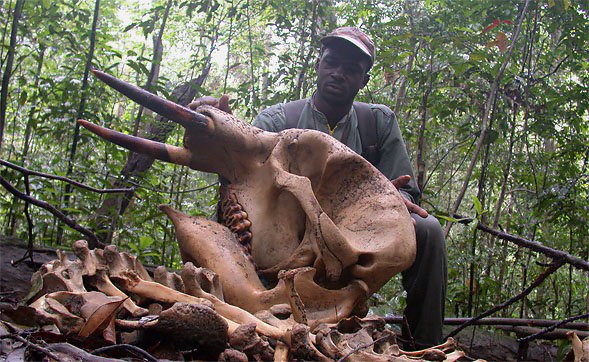Threats to Biodiversity Exposed
SDSU anthropologist Erin Riley and a group of 215 researchers from around the globe find an alarming decline in biodiversity.

Global biodiversity is declining at alarming rates, despite great efforts to preserve and protect it, found a recent study that included a massive effort of scientists from around the world.
“Averting biodiversity collapse in tropical forest protected areas,” which was published this summer in the journal Nature, explains that many protected reserves are not working as intended as guardians of the world’s ecological treasures.
“This research effectively demonstrates that protected areas do not exist in a vacuum,” said Erin Riley, a professor in San Diego State University’s Anthropology department and one of the 215 researchers who studied 60 protected areas around the world.
“We need to be equally concerned about what's happening in the broader socioecological landscape in which protected areas are situated," she said.
More about the study
The study sought to find information about three main issues:
- whether tropical reserves will function as ‘arks’ for biodiversity and natural ecosystem processes
- whether ecological changes differ among different protected areas
- what the principal predictors of reserve success or failure are, in terms of their intrinsic characteristics and drivers of change.
Led by William Laurance, a conservation biologist at James Cook University in Cairns, Australia, the study found that about half of all reserves have, for the most part, done their job.
But the rest are experiencing a widespread erosion of biodiversity due to a variety of causes, including habitat disruption, hunting and forest-product exploitation.
Some of the species impacted include big predators and other large-bodied animals, many primates, old-growth trees, and stream-dwelling fish and amphibians, among others.
The process
The group studied protected areas in the African, American and Asia-Pacific tropics, focusing on sites with mostly tropical or subtropical forests. They gathered expert knowledge from 262 detailed interviews with veteran field biologists and environmental scientists who averaged nearly two decades of experience at each protected area.
Each interviewed researcher completed a 10-page questionnaire, as well as a telephone or face-to-face interview. The questions focused on changes in 31 animal and plant species over a 20 to 30 year period. The reserves studied were located in 36 different countries and ranged in size from 390 acres to 8.9 million acres.
Study findings
The researchers found that reserves that were suffering most were those that were poorly protected and suffered encroachment from illegal colonists, hunters and loggers. The team found many nature reserves acted like mirrors — partially reflecting the threats and changes in their surrounding landscapes.
Based on her research examining the impact of human habitat alteration on Tonkean macaque ecology and conservation, Riley provided expert knowledge on patterns of animal abundance and drivers of environmental change in Lore Lindu National Park in Sulawesi Indonesia.
“One of primary problems that this protected area has faced is people’s claim to land rights, thereby demonstrating that biodiversity conservation is not just an ecological issue; it's also a social and political one,” Riley said.
“What works may vary site to site. But overall factors that seem crucial include better reserve management, in addition to a long-term research presence, dialogue with and inclusion of local human communities in conservation initiatives and education programs aimed not only at people living in and around protected areas, but those whose consumer demands contribute to habitat degradation and destruction.”




